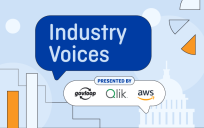 Public sector leaders and their teams around the country are exhibiting resilience, flexibility, and innovation in meeting the current COVID-19 (the “coronavirus”) challenge. Governments are exhibiting agility and courage in continuing community connections and service in this unprecedented context.
Public sector leaders and their teams around the country are exhibiting resilience, flexibility, and innovation in meeting the current COVID-19 (the “coronavirus”) challenge. Governments are exhibiting agility and courage in continuing community connections and service in this unprecedented context.
Common to all governments is the desire to provide communities with updated, factual information, straight from the source. It’s been a challenge, however, to cut through the concern and noise bombarding residents from all channels. Resources such as maps and open data dashboards, however, have proven an early success in leveraging available data to inform government action and provide essential, accurate information to the public.
Here is some guidance on how to access and share the information most important to your internal decision-makers and constituents.
1. Use Free Data Sources
Data and the ability to make sense of it are crucial components of government response to the spread of COVID-19.
Dashboards can provide comprehensive, real-time updates on the outbreak with details on the latest confirmed cases by state, timelines, fatalities, and recoveries. Dashboard graphs enable visitors from even the smallest localities to explore and reuse the source data. Openly available data allows users to conduct their own analysis, create unique visualizations, and export full datasets.
2. Prioritize Response
In addition to tracking the outbreak, data is an essential asset in prioritizing governments’ response. COVID-19 open data, for example, can be filtered by county level to ascertain where, exactly, cases are concentrated. By examining case markers in a region and filtering for age range and other factors, governments can start to see the areas where outreach should be a priority.
Variables such as data relating to poverty level, households receiving food stamps, households with no internet access, or households with no health insurance coverage, for example, can surface specific areas of disproportional impact. These variables and others can be combined to create a “High Risk Index” to show where the real concentrations of vulnerability are located for accurately targeted resource deployment.
In addition to providing governments with this actionable information, the data also helps inform the public as to the true nature of cases in their area, as well as where medical facilities, testing locations, and other public resources are located.
3. Access Additional Resources
The Federal Communications Commission is publishing out fixed broadband deployment data via this site to help governments understand and respond to issues around equitable access to information via the internet.
Additional COVID-19 related public data can be accessed via these links and sources:
- World Health Organization includes COVID-19 situation reports updated daily.
- CSSEGISandData/COVID-19 includes data on novel coronavirus cases provided by John Hopkins University Center for Systems Science and Engineering.
- The COVID Tracking Project includes web scraping data from individual state health department agencies displaying information related to positive, negative, and pending tests across the United States.
- U.S. National Library of Medicine Disaster Lit is a database for disaster medicine and public health includes links to documents at no cost, including expert guidelines, research reports, conference proceedings, training classes, factsheets, databases, and more.
- U.S. Centers for Disease Control and Prevention includes resources for the community.
Meredith Trimble is a GovLoop Featured Contributor. She is a former municipal official and Town Council Acting Chair, who focused on strategic planning, annual budgeting, and bonded infrastructure projects. Her government experience also includes posts in both federal and state-level executive branch agencies: Associate Editor of the U.S. Federal Election Commission’s FEC Record; and Director of Education for the CT Office of State Ethics. In her current role as a Senior Content Specialist with Tyler Technologies, Inc., she writes content to help empower those who serve the public. Her current focus is to help facilitate data-enabled organizations as well as to create connections between governments and those they serve. You can read her posts here.





Leave a Reply
You must be logged in to post a comment.